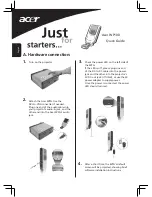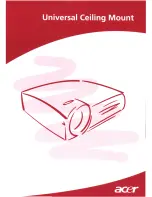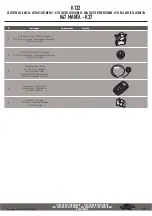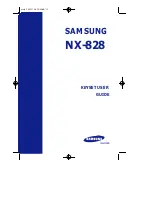
Celestron International • 2835 Columbia Street • Torrance, CA 90503 USA • Phone: 1.800.421.9649 • Fax: 310.212.5835
©2011 Celestron • All rights reserved.
#94175-INST (0511)
The Celestron Reducer/Corrector Lens for SCT Telescopes
(#94175)
INTRODUCTION
Imagine having two telescopes in one — a long focal
length instrument for lunar and planetary work and a
short focal length scope for deep sky observing and
astrophotography.
With
the
Celestron
Reducer/Corrector Lens that’s exactly what you get.
Designed specifically for Celestron Schmidt-
Cassegrains, this unique lens reduces the focal length
and f/ ratio of your telescope by 37 percent turning
your long focal length telescope into a fast, short focal
length instrument. An f/10 instrument now works at
f/6.3 while an f/11 instrument works at f/7. For visual
use this means you get lower power with the same
eyepiece and a wider field of view. Photographically
you also get a wider field and much shorter exposures.
The #94175 Reducer/Corrector Lens is not compatible
with Celestron EdgeHD optical systems.
In addition to reducing the focal length and f/ratio the
Celestron Reducer/Corrector Lens also reduces field
curvature significantly so you get a flatter, well
corrected field.
The advantages of the Reducer/Corrector Lens are not
limited to celestial photography alone. For terrestrial
photography you’ll find the faster f/ratio allows you
to use slower film or shoot in lower light level
situations and still properly expose your subject. And,
this fully multi-coated lens provides maximum light
transmission with near full-field illumination.
INSTALLATION
The Reducer/Corrector Lens is easy to install:
1. Remove all the accessories from the rear cell of your
SCT telescope. If you have a C11 or C14, remove all
the accessories, but leave the reducer plate attached to
the rear cell of the telescope.
2. Thread the Reducer/Corrector Lens onto the rear cell
of the telescope (or the reducer plate of the C11 and
C14) by rotating clockwise until tight.
3. Thread the desired accessory (i.e., T-Adapter, 1-1/4"
Visual Back, Star Diagonal, or Off-Axis Guider Body)
onto the Reducer/Corrector Lens.
The Reducer/Corrector Lens is now installed and
ready for use.
USING YOUR REDUCER/CORRECTOR LENS
There is no change in the basic operation of your
telescope with the Reducer/Corrector Lens installed.
However, because of the shorter focal length the
magnification and actual field are different for any
given eyepiece. Remember this when figuring
magnification and actual field.
Focus your telescope as usual (i.e., turning the focus
knob until the image is sharp). The sharpest possible
focus for a given eyepiece is about 3
to 4
counterclockwise turns of the focus knob from the best
focus point without the Reducer/Corrector lens
installed.
Although the Reducer/Corrector Lens diminishes the
small amount of field curvature common to all
Schmidt Cassegrain telescopes, it does not completely
eliminate it. For low power visual use, the sharpest
possible images across the majority of the field is
obtained by first focusing on the stars at the center of
the field. Make sure you come into sharp focus by
turning the focus knob counterclockwise. Once sharp,
turn the focus knob approximately 1/12th of a turn
counterclockwise.
For optimum photographic focus, obtain the sharpest
possible focus in the center of DSLR view finder. Make
sure you come into sharp focus by turning the focus
knob counterclockwise. Once the image at the center is
sharp, rotate the focus knob 1/24th of a turn
counterclockwise.
Because the field of view is very close to flat, you can
leave the Reducer/Corrector Lens in place at all times.
High power views will provide flatter fields all the
way to the edge, both visually and photographically. If
you plan on high power eyepiece projection
photography, you may consider removing the lens.
NOTE: Due to the short focal length of the telescope



















